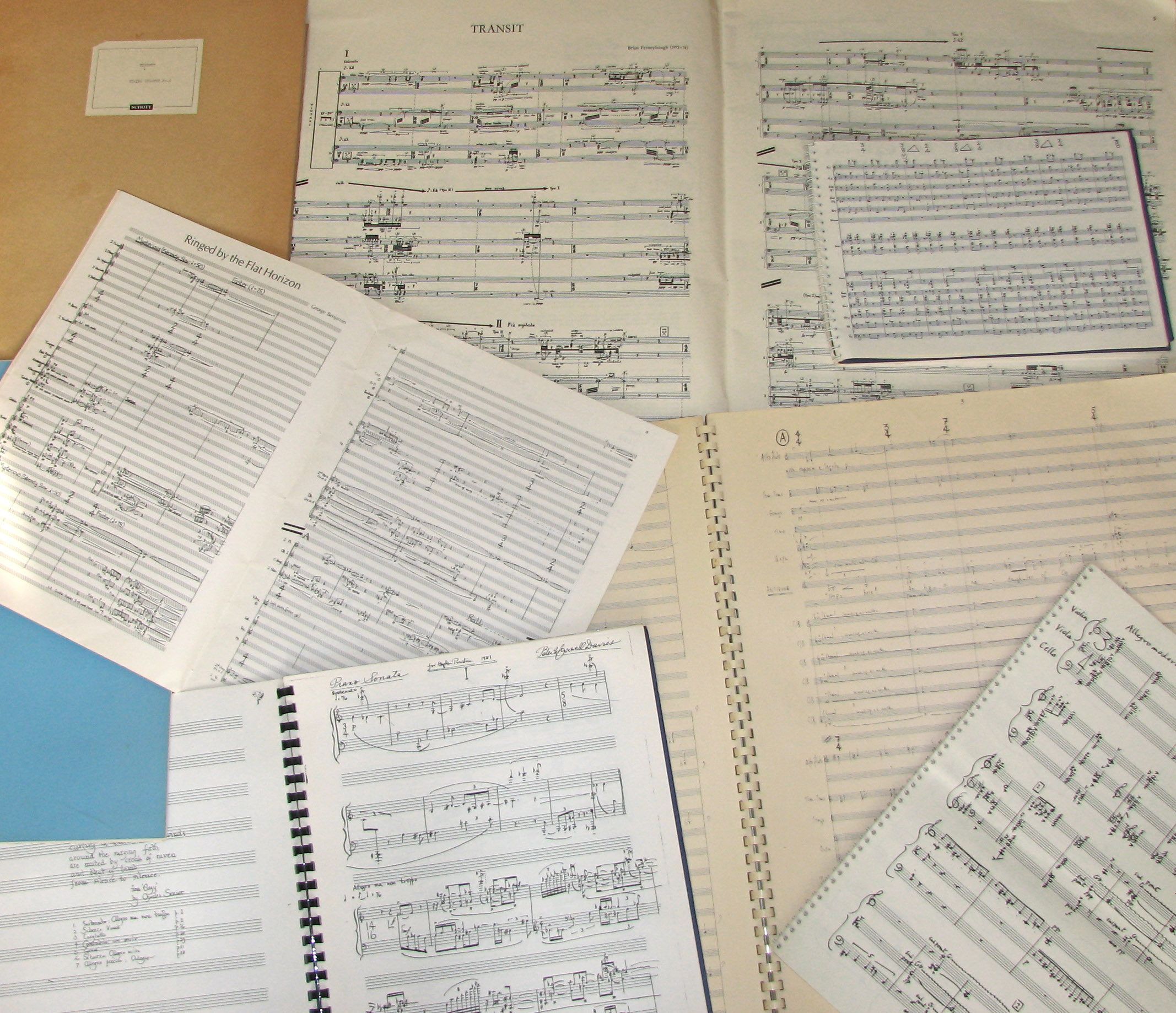
When I was asked to write something for the Spotlight series, I first looked at the index to look at the composers available online through the collection. The sheer number daunted me. How was I supposed to narrow down my focus to one thing, when there were so many avenues I could go down? For a while I got lost within the collection, I searched using tags and felt a little like Alice down the rabbit hole, with each click of the mouse bringing something else phonically interesting to my attention. I discovered works like the hauntingly beautiful ‘Black Sea’ by Ed Scolding and looked at scores by Cornelius Cardew, including Treatise Handbook.
By chance, one of the courses I’m taking as part of my MA in Contemporary Art Theory at Goldsmiths was set to read a portion of Jacques Derrida’s ‘Archive Fever’ one week. Derrida opens his book with an analysis into the origins of the word archive and continues with an exploration into Sigmund Freud and email.
The British Music Collection is an interesting archive, it exists both on and offline with both available to members of the public. We all are, to a certain extent, the archons. The archon is a term Derrida uses taken from the Greek origins of the archive. Although most of us do not take care of the archive’s security, which Derrida states as a role of an archon, we do interpret the collection: “They do not only ensure the physical security of what is deposited and of the substrate. They are also accorded the hermeneutic right and competence. They have the power to interpret the archives.”
The collection consists of 40,000 scores and recordings from the 20th and 21st century, it therefore is a fascinating resource, and is growing all the time. This makes it a great opportunity to spot any trends and to try and guess in which direction British music is moving.
Of course in order to make the collection easily accessible there has to be classification. Derrida refers to the power of the archive to gather and categorize: “The archontic power, which also gathers the functions of unification, of indentification, of classification, must be paired with what we call the power of consignation. By consignation, we do not only mean, in the ordinary sense of the word, the act of assigning residence or of entrusting so as to put into reserve (to consign, to deposit), in a place and on a substrate, but here the act of consigning through gathering together signs.” When I had to think of tags for my work ‘Photo Piece’ I found the task intriguing. I came up with the following: abstract art, performance art, video art, sonic art, installation, live performance, multimedia performance, contemporary, classical orchestra, art, abstract film. Coming up with tags for a work is similar to the task of describing what your practice is about. In day-to-day life, getting your haircut for example, the following conversation usuallu arises: “what do you do?” “oh, I’m an artist/creative producer*” “what sort of work do you make?” The task here is to come up with a sort sentence explaining what you do, I tend to just list things: “Photograms, installations, videos, sounds, performances, interventions… looking at the politics of looking and listening.” It’s almost easier to list what you don’t interact with.
In ‘Archive Fever’ Derrida discusses technological advancements and how they impact the archive. Indeed the very nature of the archives means that when something is archived it becomes past, or at the least, non-contemporaneous: “No, the technical structure of the archiving archive also determines the structure of the archivable content even in its very coming into existence and in its relationship to the future. The archivization process produces as much as it records the event.” Is the act of archiving itself a performance? The British Music Collection is also in the process of digitizing some of its records. Myself and, I assume, a lot of practitioners back up and store their works. I possess two hard drives, one as a general backup for my computer and the other which solely exists as a video archive which contains older works and render files. I have full awareness that at some point I will have to upgrade my hard drive technology and I fear the day that the mpg4 becomes outdated. If such a time comes I would have to transfer all my video files onto a different format. It is important for archives to have a physical and digital presence, just as it is important to have physical and digital artistic interventions and curations within an archive.
One of my rabbit-hole journeys within the digital archive via Tags: Audio/Visual >> babbleburblebubble >> Anna Dolphin >> sonic art >> Morse Code Choir >> radio art >> Morse Code Choir >> experimental >> Brian Eno >> drone >> Kyrie >> Choral >> Five Studies after Josef Albers >> piano >> Messengers of Light
*I find the term artist to sometimes be too prescriptive
Jesc Bunyard
Jacques Derrida, Archive Fever: A Freudian Impression, 1995 translated by Eric Prenowitz, London: The University of Chicago Press.
